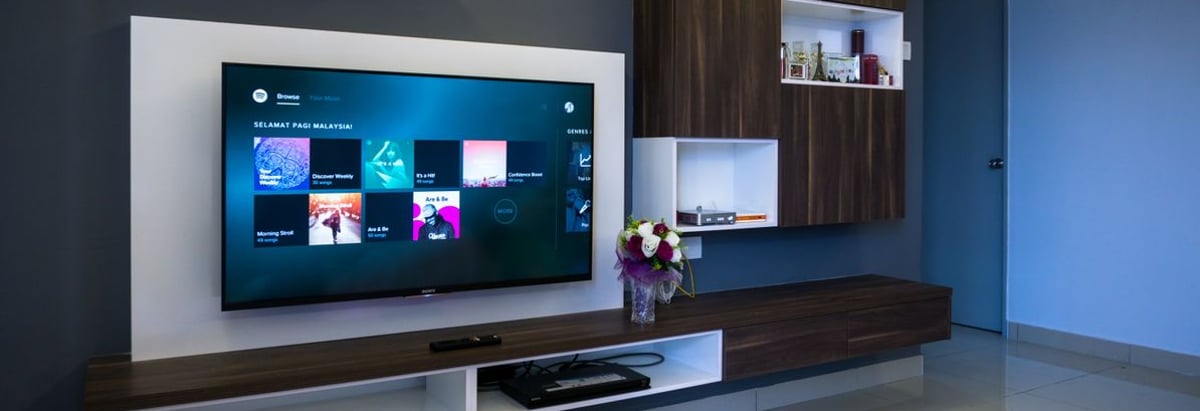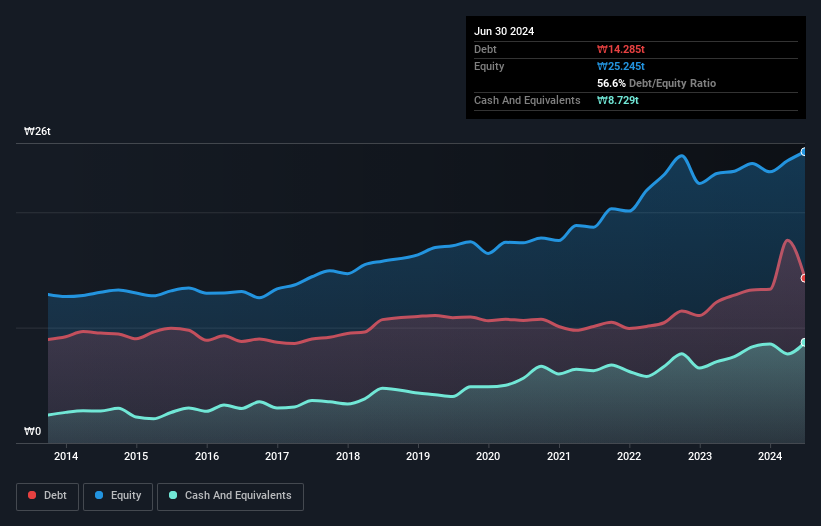- South Korea
- /
- Consumer Durables
- /
- KOSE:A066570
Here's Why LG Electronics (KRX:066570) Has A Meaningful Debt Burden

David Iben put it well when he said, 'Volatility is not a risk we care about. What we care about is avoiding the permanent loss of capital.' So it might be obvious that you need to consider debt, when you think about how risky any given stock is, because too much debt can sink a company. We can see that LG Electronics Inc. (KRX:066570) does use debt in its business. But the real question is whether this debt is making the company risky.
Why Does Debt Bring Risk?
Debt is a tool to help businesses grow, but if a business is incapable of paying off its lenders, then it exists at their mercy. Ultimately, if the company can't fulfill its legal obligations to repay debt, shareholders could walk away with nothing. However, a more usual (but still expensive) situation is where a company must dilute shareholders at a cheap share price simply to get debt under control. By replacing dilution, though, debt can be an extremely good tool for businesses that need capital to invest in growth at high rates of return. The first thing to do when considering how much debt a business uses is to look at its cash and debt together.
View our latest analysis for LG Electronics
How Much Debt Does LG Electronics Carry?
You can click the graphic below for the historical numbers, but it shows that as of June 2024 LG Electronics had ₩14t of debt, an increase on ₩13t, over one year. On the flip side, it has ₩8.73t in cash leading to net debt of about ₩5.56t.

How Strong Is LG Electronics' Balance Sheet?
Zooming in on the latest balance sheet data, we can see that LG Electronics had liabilities of ₩24t due within 12 months and liabilities of ₩14t due beyond that. On the other hand, it had cash of ₩8.73t and ₩10t worth of receivables due within a year. So its liabilities total ₩19t more than the combination of its cash and short-term receivables.
When you consider that this deficiency exceeds the company's huge ₩19t market capitalization, you might well be inclined to review the balance sheet intently. In the scenario where the company had to clean up its balance sheet quickly, it seems likely shareholders would suffer extensive dilution.
In order to size up a company's debt relative to its earnings, we calculate its net debt divided by its earnings before interest, tax, depreciation, and amortization (EBITDA) and its earnings before interest and tax (EBIT) divided by its interest expense (its interest cover). Thus we consider debt relative to earnings both with and without depreciation and amortization expenses.
LG Electronics's net debt is only 0.77 times its EBITDA. And its EBIT easily covers its interest expense, being 36.6 times the size. So you could argue it is no more threatened by its debt than an elephant is by a mouse. Another good sign is that LG Electronics has been able to increase its EBIT by 26% in twelve months, making it easier to pay down debt. The balance sheet is clearly the area to focus on when you are analysing debt. But ultimately the future profitability of the business will decide if LG Electronics can strengthen its balance sheet over time. So if you're focused on the future you can check out this free report showing analyst profit forecasts.
Finally, a company can only pay off debt with cold hard cash, not accounting profits. So the logical step is to look at the proportion of that EBIT that is matched by actual free cash flow. Over the last three years, LG Electronics reported free cash flow worth 3.9% of its EBIT, which is really quite low. That limp level of cash conversion undermines its ability to manage and pay down debt.
Our View
While LG Electronics's conversion of EBIT to free cash flow has us nervous. To wit both its interest cover and EBIT growth rate were encouraging signs. Looking at all the angles mentioned above, it does seem to us that LG Electronics is a somewhat risky investment as a result of its debt. That's not necessarily a bad thing, since leverage can boost returns on equity, but it is something to be aware of. Over time, share prices tend to follow earnings per share, so if you're interested in LG Electronics, you may well want to click here to check an interactive graph of its earnings per share history.
Of course, if you're the type of investor who prefers buying stocks without the burden of debt, then don't hesitate to discover our exclusive list of net cash growth stocks, today.
New: AI Stock Screener & Alerts
Our new AI Stock Screener scans the market every day to uncover opportunities.
• Dividend Powerhouses (3%+ Yield)
• Undervalued Small Caps with Insider Buying
• High growth Tech and AI Companies
Or build your own from over 50 metrics.
Have feedback on this article? Concerned about the content? Get in touch with us directly. Alternatively, email editorial-team (at) simplywallst.com.
This article by Simply Wall St is general in nature. We provide commentary based on historical data and analyst forecasts only using an unbiased methodology and our articles are not intended to be financial advice. It does not constitute a recommendation to buy or sell any stock, and does not take account of your objectives, or your financial situation. We aim to bring you long-term focused analysis driven by fundamental data. Note that our analysis may not factor in the latest price-sensitive company announcements or qualitative material. Simply Wall St has no position in any stocks mentioned.
About KOSE:A066570
LG Electronics
Manufactures and sells consumer and commercial products worldwide.
Flawless balance sheet, good value and pays a dividend.
Similar Companies
Market Insights
Community Narratives


